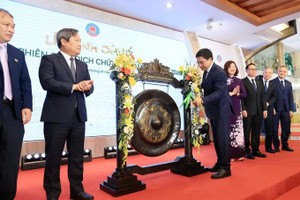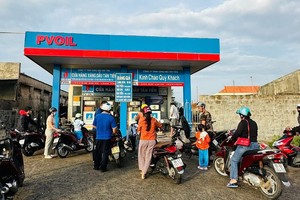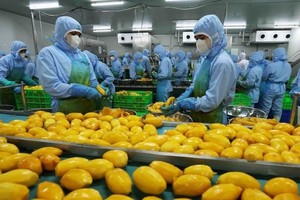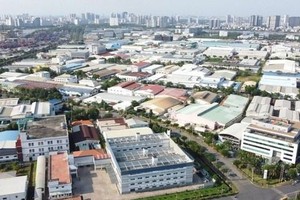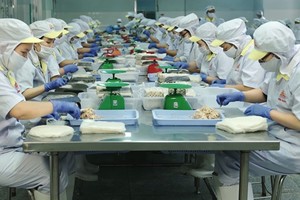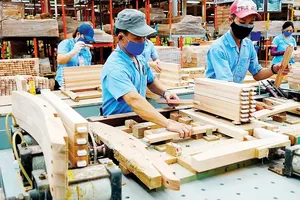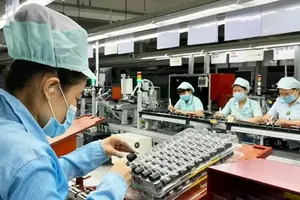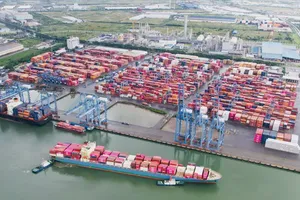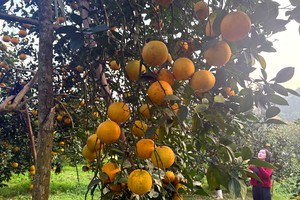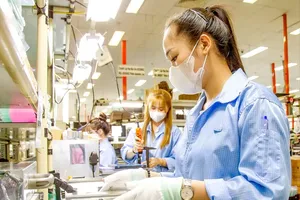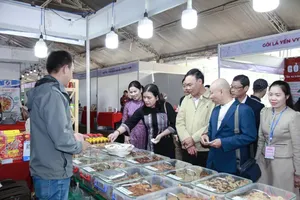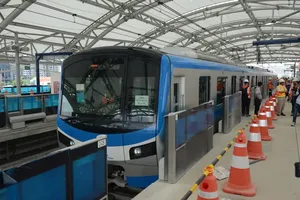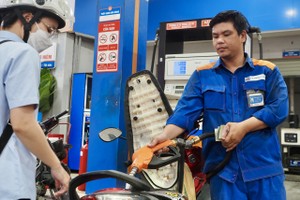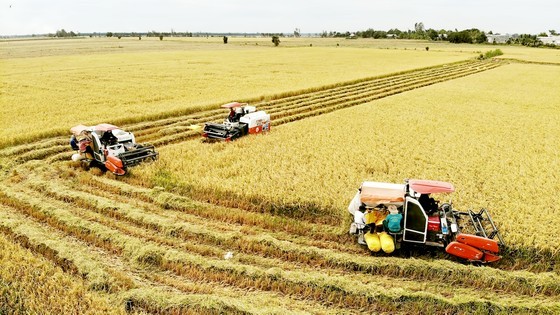 |
Rice harvesting using a combine harvester in a large-scale field in Tan Hung District of Long An Province (Photo: SGGP) |
Starting in the Mekong Delta provinces of An Giang and Dong Thap in 2009, the model of large-scale field was then formally encouraged nationwide by the Ministry of Agriculture and Rural Development. In this model, there is a close link among the four stakeholders in the supply chain: the Government who introduces suitable policies; scientists who teach appropriate farming techniques; businesses which provide high-quality seeds, fertilizers, and then ensure produce consumption; and farmers who directly grow rice crops on their land.
64-year-old farmer Tu Tan in Thoai Son District of An Giang Province proudly shared that in the winter-spring crop this year, he harvested nearly 60 tonnes of rice on a surface area of 6.5ha. With the price of VND7,000 (US$0.3) per kilo, he earned about VND50 million ($2,100) profit per hectare. He adopted the model of ‘field without footprint’, also known as large-scale fields where most growing steps (land tilling, seed sowing, fertilizer and water spraying, crop harvesting) have been mechanized.
Such a model proves convenient, labor- and cost-effective. Because there are only 1-2 seed types in each field, the chances of plants being infected with pests are lower, leading to less fertilizer use. Thanks to a significant reduction in expenses by 15-20 percent, the profit of farmers increases correspondingly. They will, in turn, invest more in advanced machines like agridrones (unmanned aerial vehicles) to further rise their revenues.
Another advantage of the large-scale field model is a yield increase. Chairman Pham Tan Hao of the Directors Board of Hung Thanh Commercial-Agricultural Cooperative (sited in Long An Province) informed that following a traditional growing method, on 1 hectare of rice field, farmers need 160kg of seeds. The figure drops to 100-120kg in the former model, which means a saving of VND1 million (US$42.6).
Besides, sowing seeds by a machine brings a more equal distance between each plant, resulting in better nutrition absorbance, and thus higher yield, not to mention the fact that these plants can hardly fall even in heavy rain and can better cope with climate change.
Chairman Luu Van Nga of the Directors Board of Hung Phu Agricultural Cooperative (Long An Province) also reported that when following the large-scale field model, the average costs drop by 10 percent while the output reaches 8-10 tonnes of rice per hectare (long-term rice) or 5.5-6 tonnes per hectare (short-term rice), earning an extra profit of VND4 million ($170) a hectare.
The Department of Crop Production also shared that the average-quality rice used to account for 80 percent of the export volume, but now decreases to only 20 percent. The rest belongs to high-quality aromatic rice, mostly coming from large-scale fields.
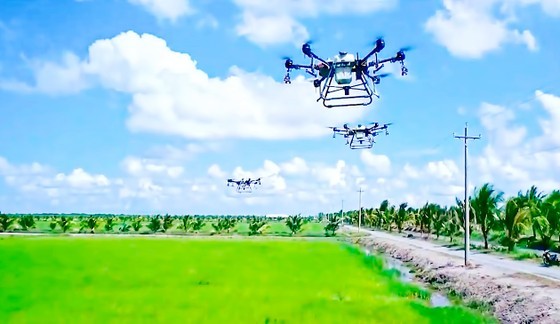 |
Using an agridrone to spray fertilizer on a large-scale field in the Mekong Delta (Photo: SGGP) |
Deputy Director of Long An Province Department of Agriculture and Rural Development Nguyen Chi Thien commented that the most prominent benefit of this model is business’s guarantee of produce consumption according to contracted prices. This has put the mind of farmers at ease, which accounts for half of the model’s success already.
He added that the reasonable prices for fertilizer and herbicide offered by business partners, along with careful consultation and instruction have also contributed to yield increases. Meanwhile, any farmers in short of capital can ask for a cost advance for machine renting and material purchasing and return them after selling their crops without having to ensure high loan interest rates.
General Director Pham Thai Binh of Trung An Hi-tech Agriculture JSC., which has worked for over 25 years in the industry in Can Tho City, said that large-scale fields have eliminated small-scale production and formed stable, synchronous areas of high-quality crop fields following a fixed growing process to satisfy the demands of foreign markets.
He cited that in 2012, right after the Ministry of Agriculture and Rural Development introduced the large-scale field model on a surface area of 428ha in Co Do District of Can Tho City with his company as a stakeholder, the first batch of 2,000 tonnes of 5-percent broken rice was bought at a price higher than market ones by $70 per tonne, which was quite surprising and exciting.
Following this model, the quality and value of Vietnamese rice have been affirmed and appreciated in international markets. More and more foreign partners have reached domestic agricultural businesses for export orders. From the first 428ha, Trung An Hi-tech Agriculture JSC. has expanded the rice fields to over 10,000ha in various provinces in the Mekong Delta now. All observe the organic growing method under Global GAP standards in order to win the demanding markets like the US, Europe, and Japan.
Minister of Agriculture and Rural Development Le Minh Hoan stated that the large-scale field model is an inevitable trend of modern agriculture when it increasingly applies mechanization in crop planting to have stable output and quality. What is more, this model can address the problem of laborers migrating to urban areas seeking better jobs. Instead, they now can live nearer their hometown when working in produce processing factories and warehouses.
